July 8, 2021
My Garden: Summertime Hot Spots in Shade and Sun
Welp, the past week’s bucketing rain pretty much detoured my little patch. Its smatters dotted crinum lily ‘Ellen Bosanquet’, yet another stalwart survivor of February’s freeze and years of drought. But recent rains did the blooming trick. As Steve Lowe of Tejas Bulbs told us in a recent segment, “Nothing really spurs these things on like a good rain.”
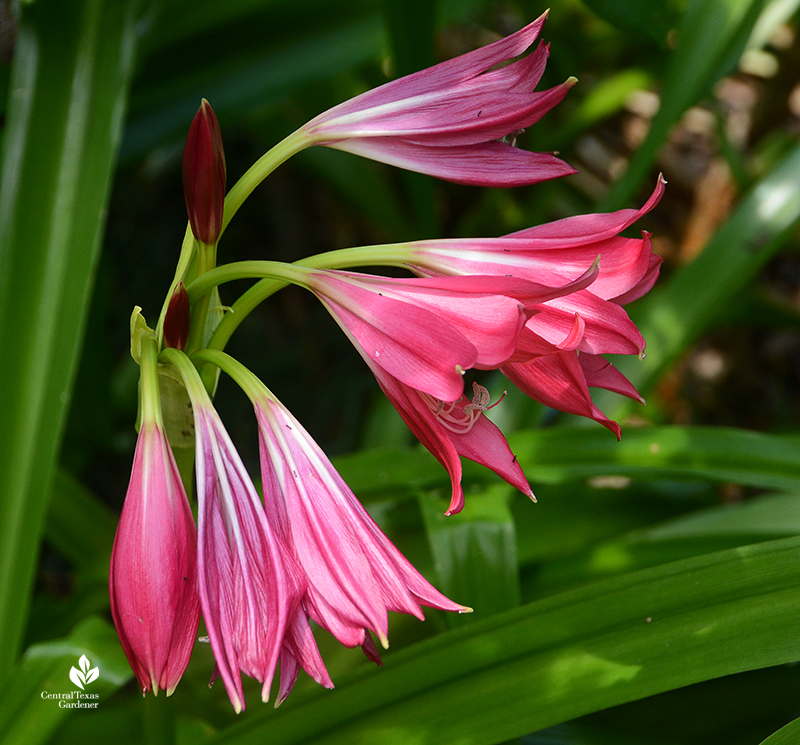
Texas weather doesn’t do things halfway, that’s for sure. Stormy clouds darkened the house while I was editing an upcoming segment. Then, in a flash, bright sun swept it all away with nary a raindrop fallen. I skipped outside to grab a few shots and spied this cutie on my Tecoma stans.
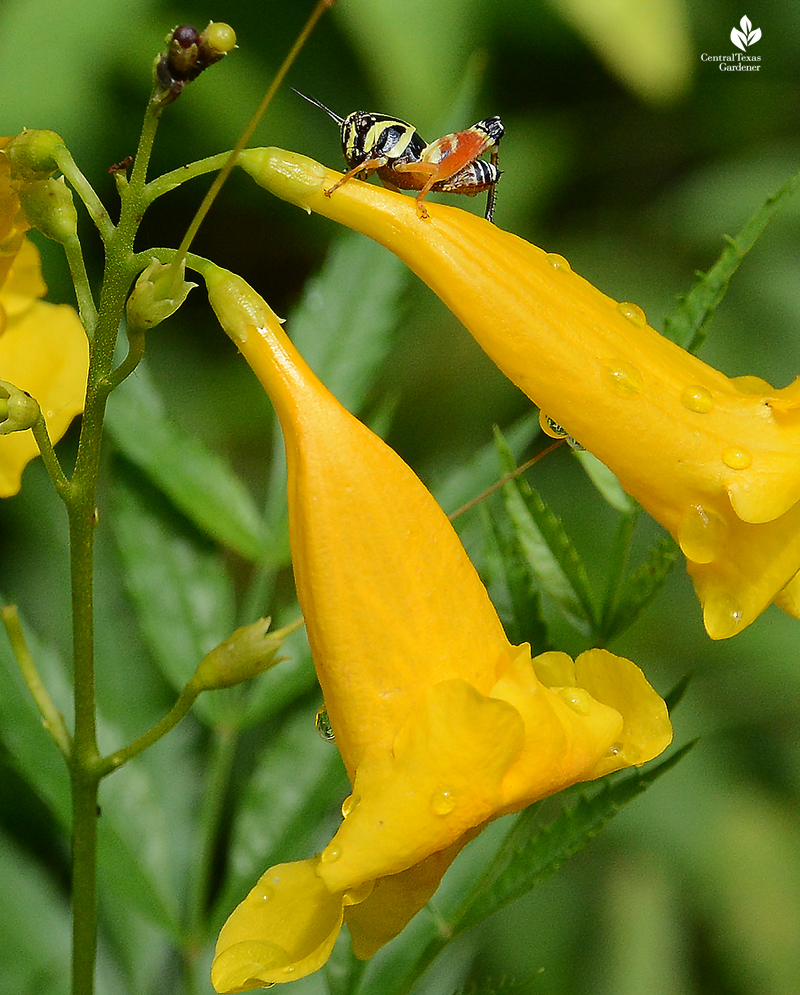
iNaturalist and BugGuide confirmed that it’s a young instar (nymph) of Aztec spur-throated grasshopper. Yes, I know it’ll chomp plants, but I didn’t disturb its peaceful sunbath. Most likely, a bird had it for lunch. My attitude is “live and let live” in my backyard habitat. That’s worked out quite well, since it’s been too long to remember an infestation of any particular pest. Somebody’s always eating somebody else. By the way, this is native Tecoma stans var. angustata.
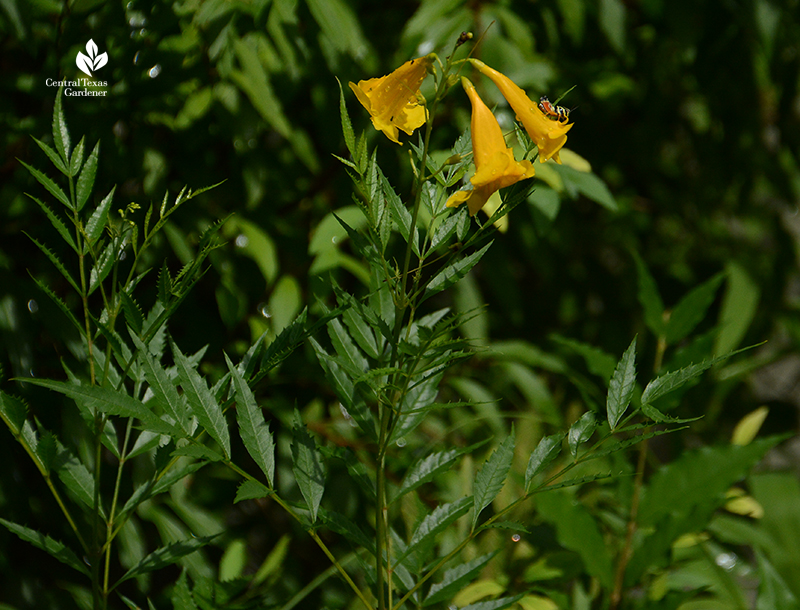
It doesn’t bloom as prolifically (for me, anyway) as do showy cultivar esperanzas like ‘Gold Star’ and orange-hued varieties, which I’d like to have. I’m wowed every summer by a neighbor’s street side ‘Gold Star’ and Pride of Barbados, humming with pollinator cheer.
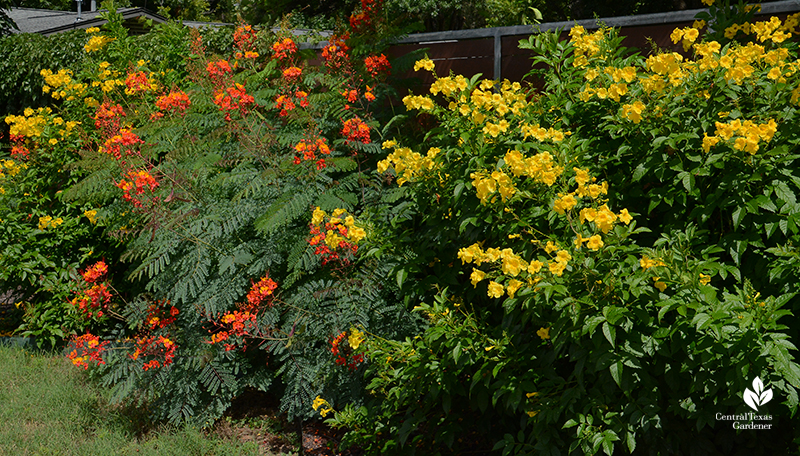
My Tecoma stans gets unfettered sun in a back cove midday and late afternoon, dipping to shade in between. Nearby, hummingbird-beloved native shrub flame acanthus seeded itself behind strong-bladed lemongrass (that survived 9°). Plants know best where they want to live, and often, they’re more clever than I am about visually intriguing plant arrangement.
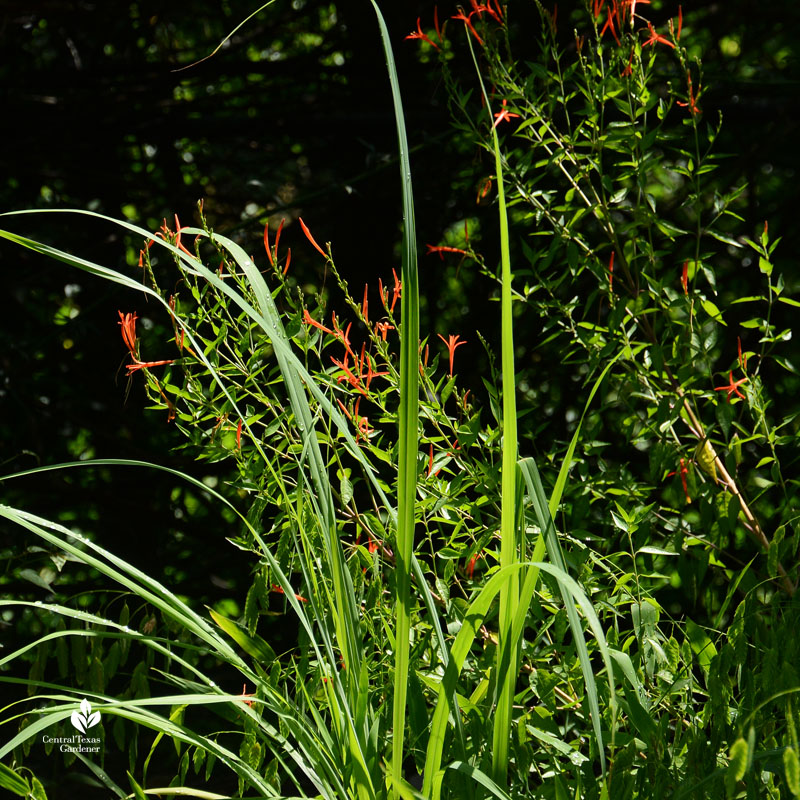
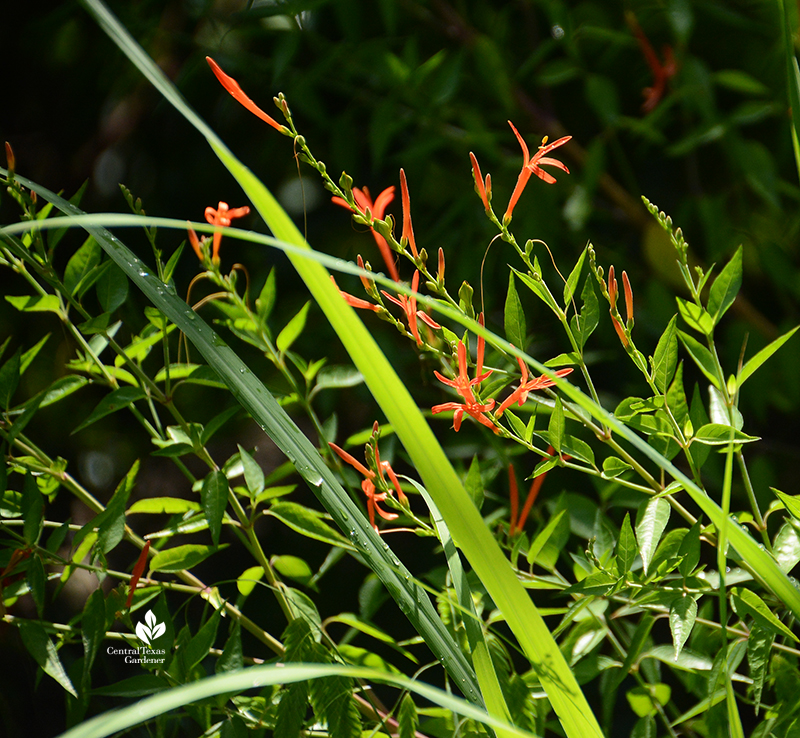
Native perennial Turk’s caps dot every area of the garden—from part shade to dappled sun to brief sun blasts. ‘Pam’s Pink’ unfurled its first flowers this week.
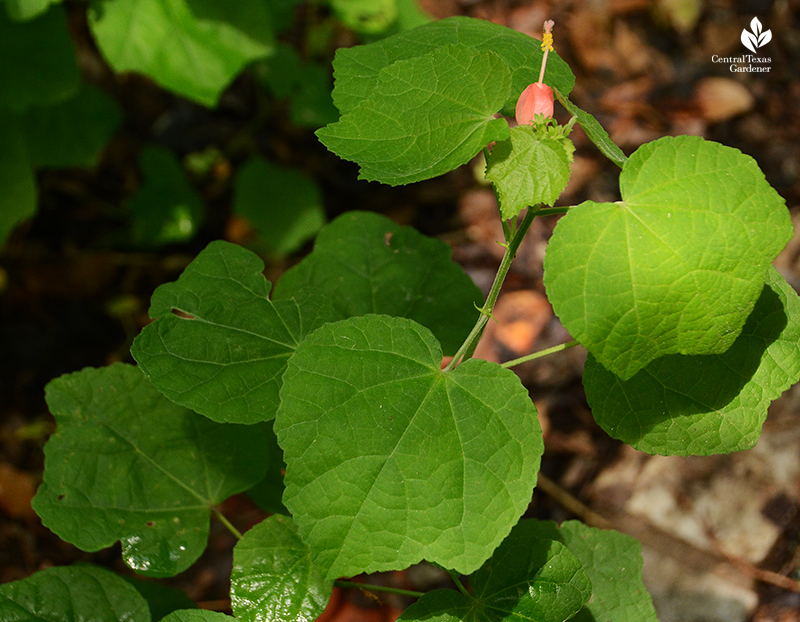
In this cool, dappled light strip, where I wanted to disguise the chain link fence, I planted to feed and shelter wildlife. There’s red Turk’s cap, too, along with Mexican honeysuckle, American beautyberry, frostweed, inland sea oats and rampaging Virginia creeper.
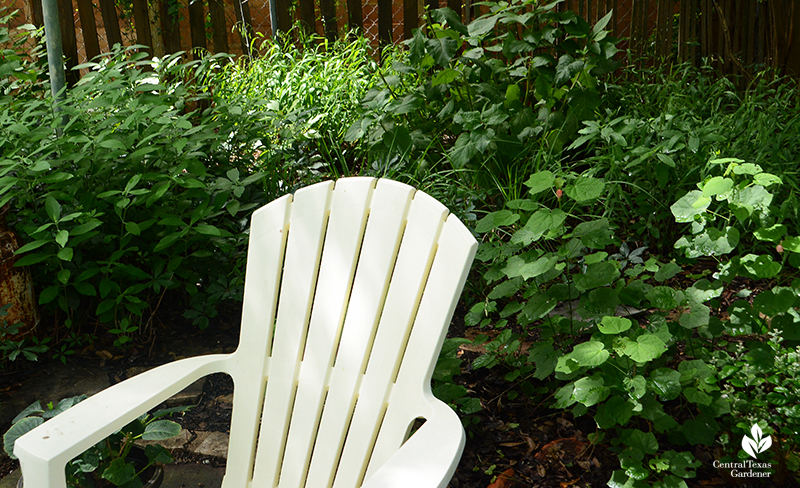
Note: Drake White of @nectarbarsa on Instagram recently advised us to cut back our mammoth frostweed a few feet. Clipping now will fluff it out and produce more white flowers this fall for migrating butterflies and other pollinators. Watch her CTG “Gardening for Bees and Butterflies” conversation.
Here’s a wider view of the fence strip where I cut things back a bit last weekend (including the frostweed) to glimpse the rustic path I laid long ago. This used to be all grass, especially when it was sunny. One summer, I laid down cardboard from salvaged boxes and newspapers and covered with compost and mulch. By that fall, I was ready to plant, an on-going process, of course.
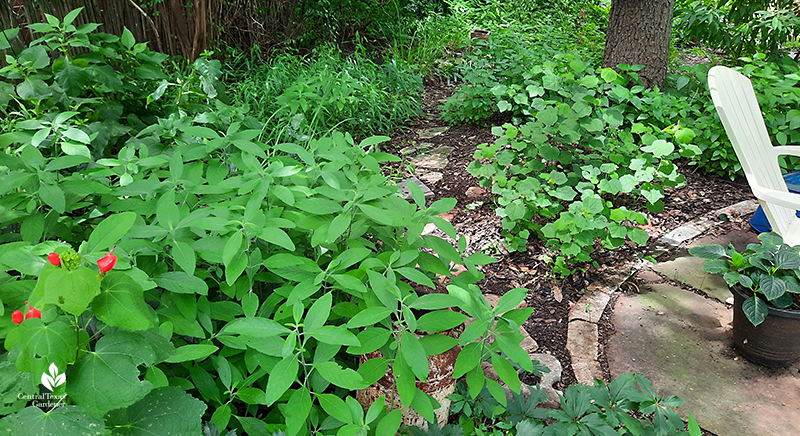
Although I don’t water plants a lot, I do “water” the birds and other wildlife with upraised birdbaths and a ground-level bowl for mammals that seek a drink in parched summer days. In this shallow container—a repurposed saucer—I placed a pumice fragment where bees can sit and sip alongside birds. Rambling Turk’s cap fills out a once-blank spot along the part sun/shade back fence strip, where hummingbirds and butterflies dart into those tubular flowers.
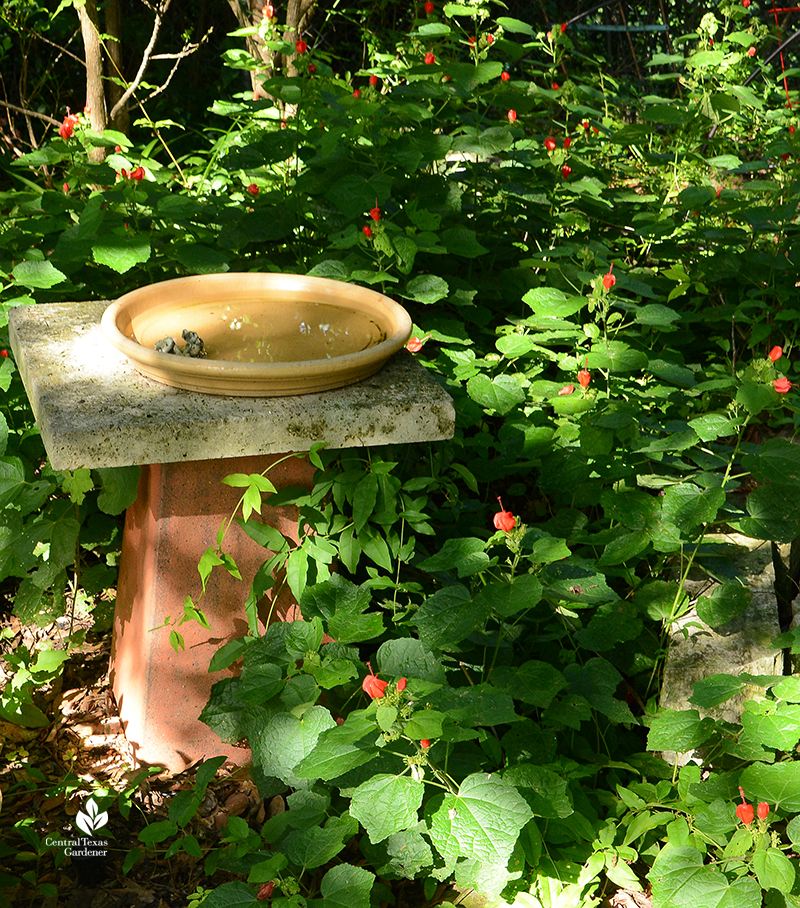
Sunflowers favored a hot spot beyond easy hose reach to sow generations of sky-high summertime bounty for bees, butterflies, and seed-plucking little birds.
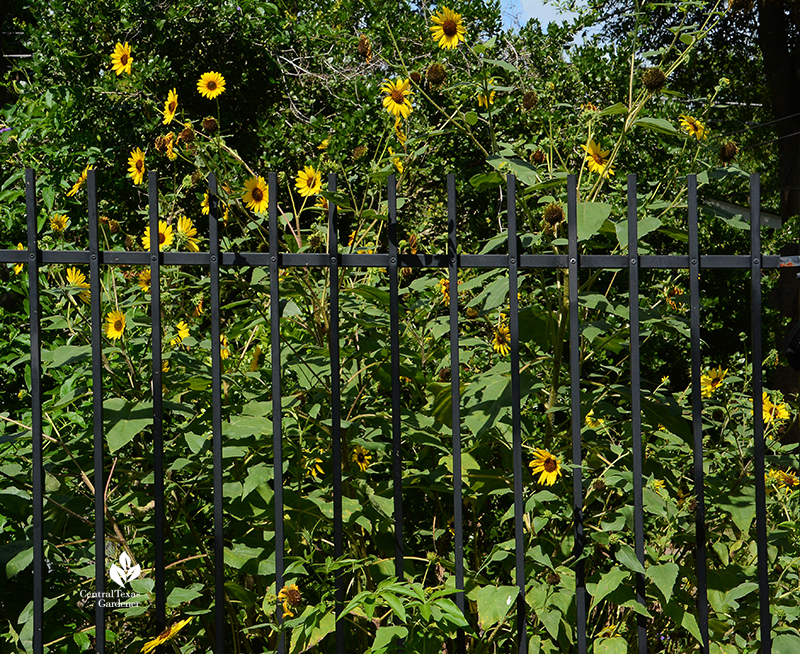
Thanks for stopping by! See you next week, Linda
tags:

